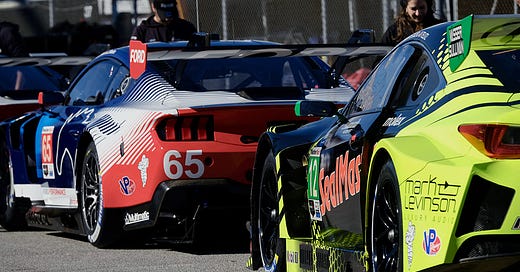Insight: Inside IMSA's Revamped GT BoP Process for Daytona
IMSA technical director Matt Kurdock explains the changes to the BoP procedure that were on display at its recent sanctioned test at Daytona International Speedway...
IMSA undoubtedly had its share of challenges with Balance of Performance in January’s Rolex 24 at Daytona in the GT classes, particularly with the new-for-2023 Porsche 911 GT3 R, Ferrari 296 GT3 and upgraded Lamborghini Huracan GT3 EVO2 that all lacked data and were arguably set in conservative configurations and unable to challenge for class wins or podiums.
The sanctioning body has learned from those lessons and developed an evolution to its BoP process that was on display at the recent IMSA-sanctioned test at Daytona International Speedway, which was welcoming a trio of either all-new or updated GT3 machinery for the 2024 season.
With the Rolex 24 at Daytona marking the competition debuts of the new Ford Mustang GT3 and Chevrolet Corvette Z06 GT3.R, as well as Aston Martin’s Vantage GT3 Evo, IMSA’s technical team, led by Matt Kurdock, have been working overtime to ensure that a repeat of the 2023 season opener doesn’t happen and that the outcome of the GTD Pro and GTD classes won’t be entirely dictated by BoP.
Kurdock’s team put into place a new system, dubbed ‘Targeted Performance Testing’ during the multi-day outing, where each GT3 manufacturer nominated a Gold or Platinum-rated driver to run to IMSA’s prescribed testing plan, in an effort to gather a sufficient amount of data ahead of the all-important Florida endurance classic.




